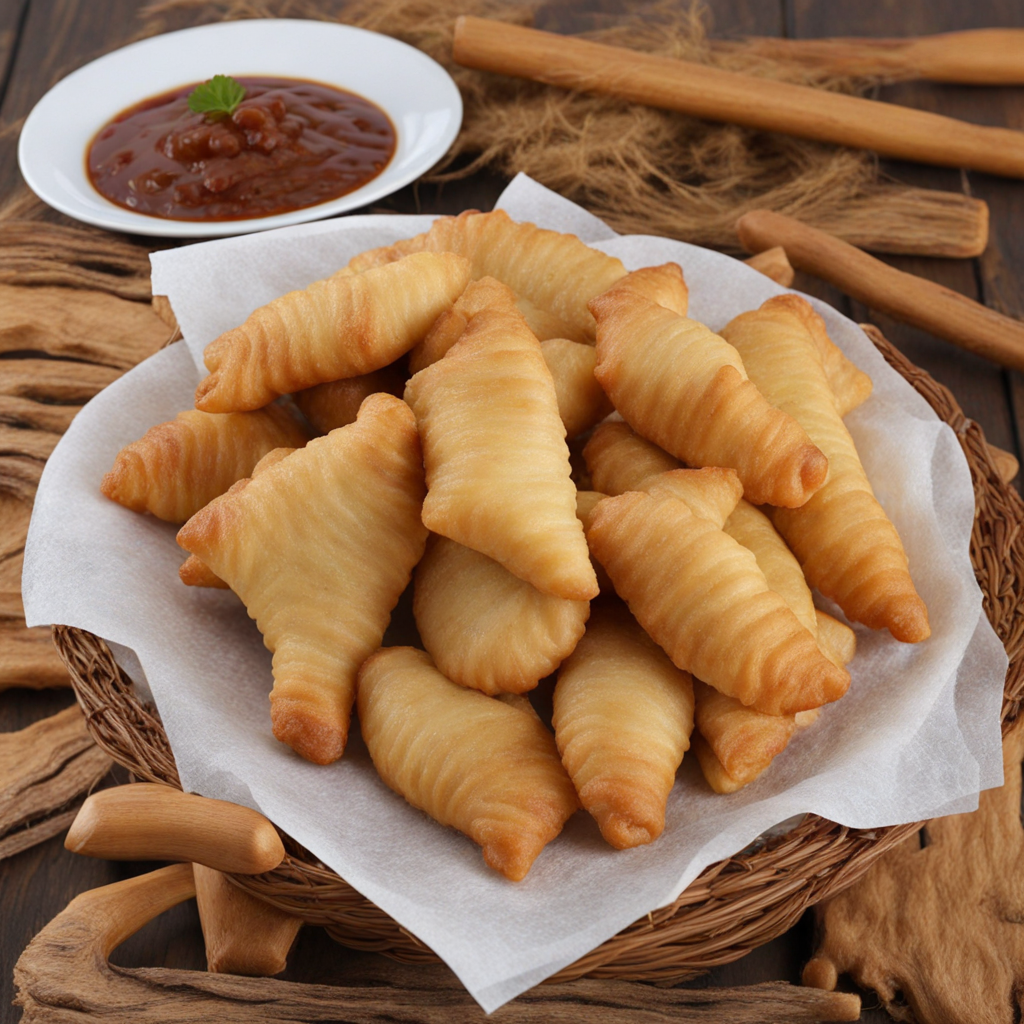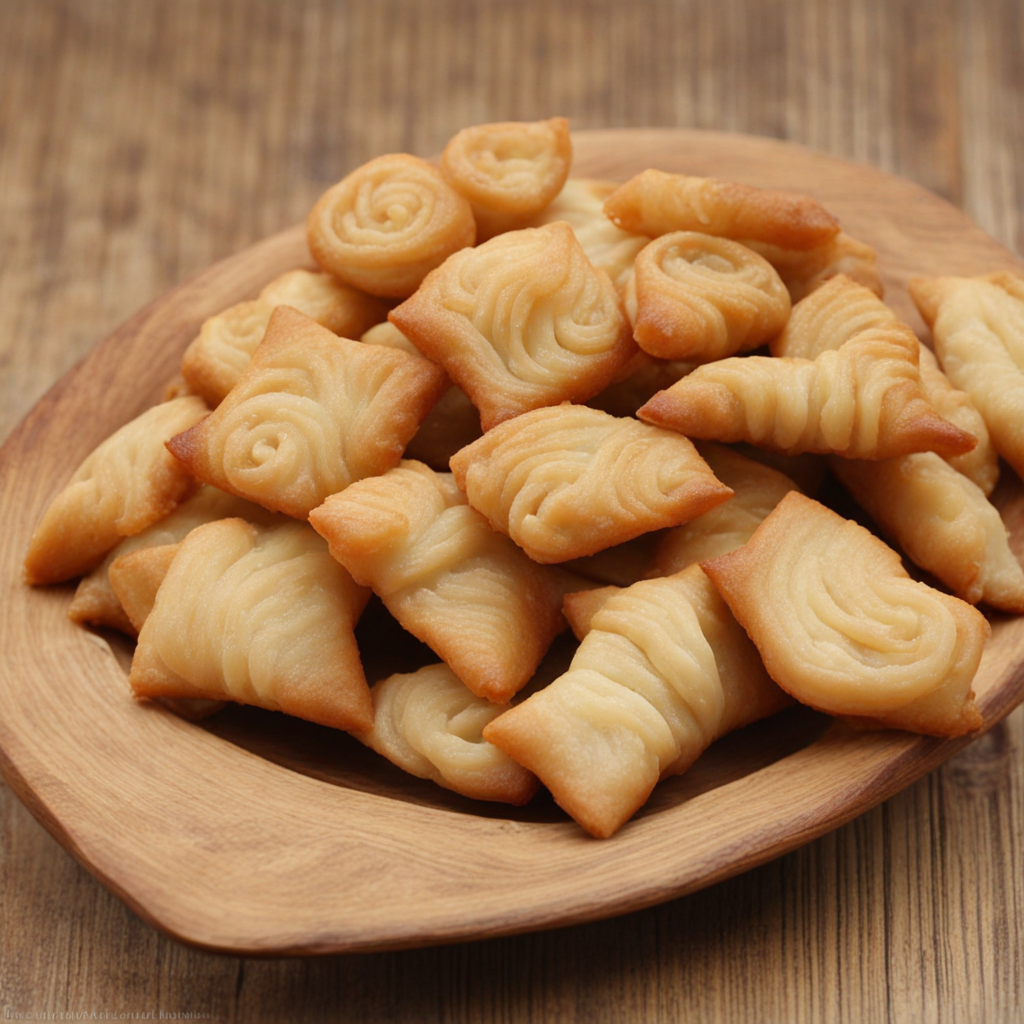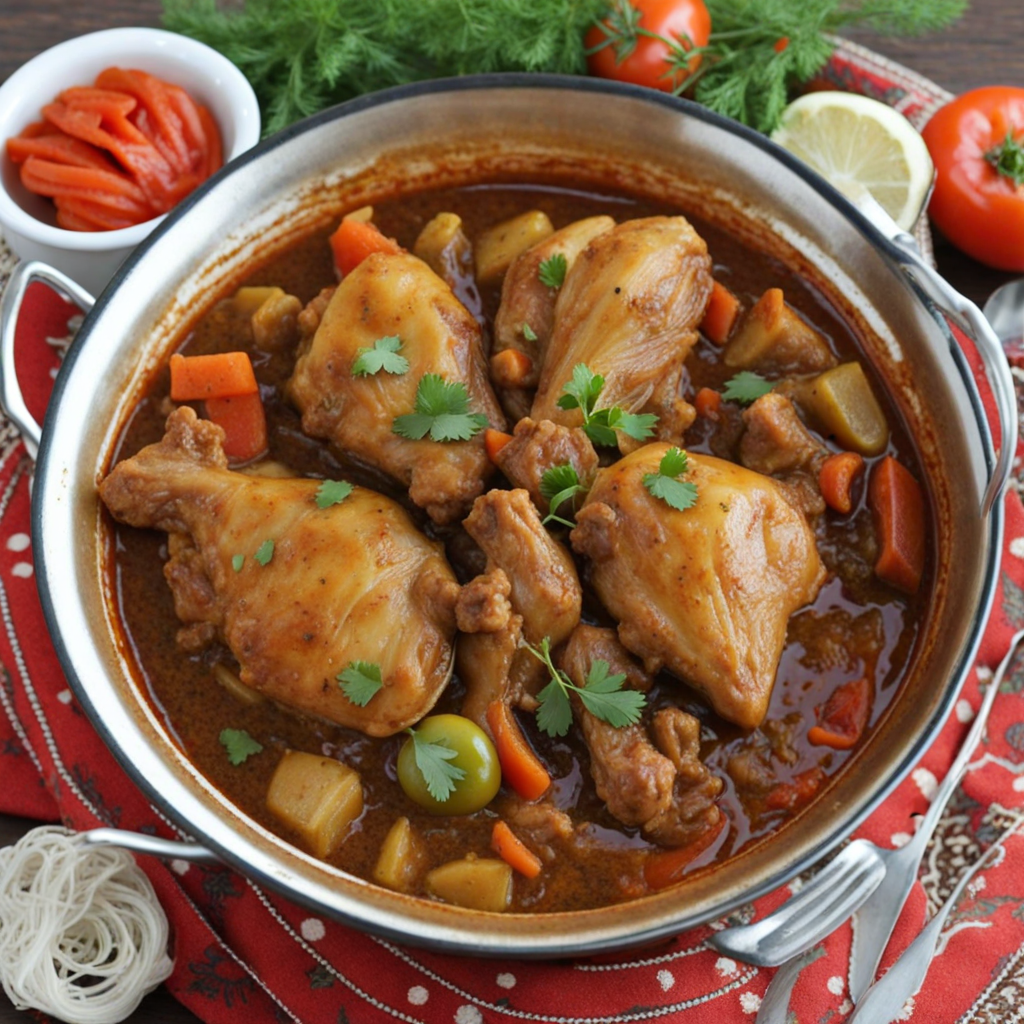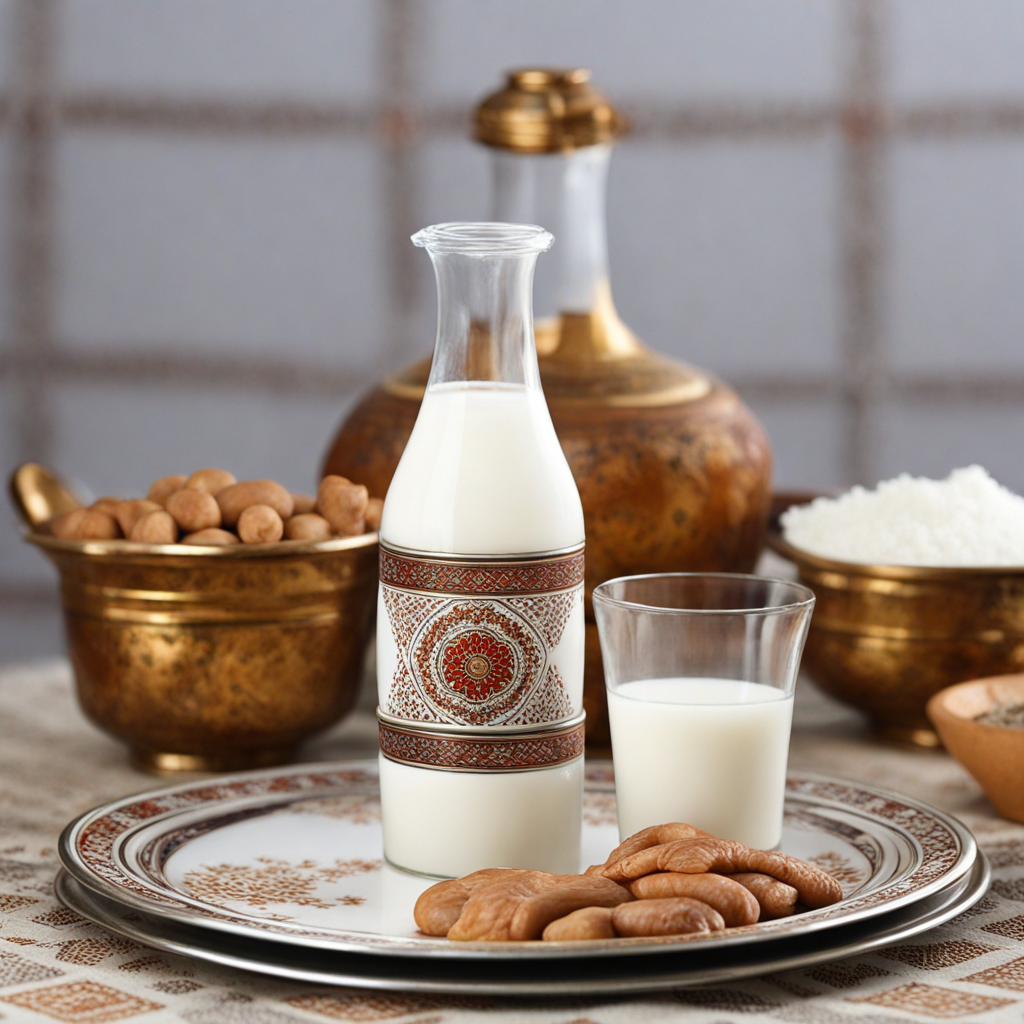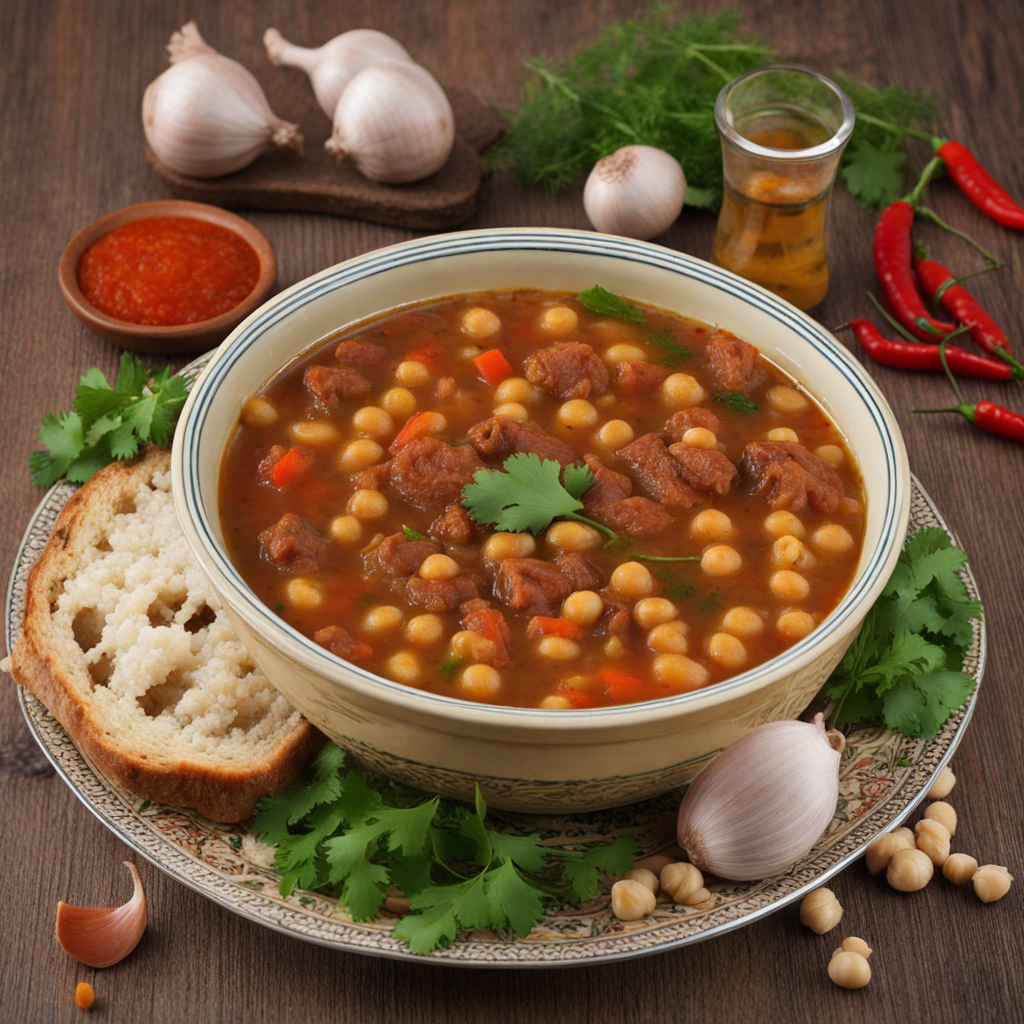Baursak
Baursak is a delightful traditional pastry from Turkmenistan, often enjoyed during festive occasions and family gatherings. These golden-brown, fluffy dough balls are made from a simple mixture of flour, yeast, sugar, and milk, which creates a rich, tender texture that melts in your mouth. They are typically deep-fried, resulting in a crispy exterior that contrasts beautifully with the soft, airy interior. The aroma of freshly fried baursak is irresistible, making it a beloved snack or dessert among locals and visitors alike. What sets baursak apart is its versatility; while they are often served plain, they can also be enjoyed with a variety of accompaniments. Traditionally, they are paired with sweetened tea or served alongside savory dishes like pilaf. Some variations include sprinkling powdered sugar over the top for a touch of sweetness or even filling them with creamy fillings or jams, allowing for a delightful mix of flavors. This adaptability makes baursak a popular choice for both casual meals and special celebrations. The cultural significance of baursak in Turkmen cuisine cannot be overstated. Often, they are prepared during weddings, holidays, or important gatherings, symbolizing hospitality and warmth. Sharing baursak with guests is a gesture of welcome, making it a vital part of communal dining experiences. For anyone looking to explore the culinary traditions of Turkmenistan, tasting baursak is a must, as it encapsulates the heart and soul of the region's rich gastronomic heritage.
How It Became This Dish
The History and Cultural Significance of Баурсак (Baursak) from Turkmenistan Baursak, a cherished traditional food in Turkmenistan, is a fried dough delicacy that embodies the rich cultural heritage and communal spirit of the Turkmen people. This delightful treat, often served during celebrations and gatherings, has a fascinating history and cultural significance that spans centuries. #### Origins and Early History The roots of baursak can be traced back to the nomadic lifestyle of Central Asian tribes, particularly the Turkmen, who have historically inhabited the vast steppes of Turkmenistan. The word "baursak" itself is derived from the Persian "bāzārgān," which means "to fry." This hints at the shared culinary traditions across the region, where bread and dough-based foods have been staples for nomadic communities. The earliest iterations of baursak likely emerged from the need for portable and easily prepared food that could sustain nomads during their travels across the challenging terrain. The simple ingredients—flour, water, salt, and yeast—were readily available from their livestock and the natural environment. The dough would be shaped into small pieces and fried in animal fat, resulting in a fluffy, golden-brown treat that could be consumed on the go. #### Cultural Significance Baursak holds a significant place in Turkmen culture, often symbolizing hospitality and abundance. It is customary to serve baursak to guests as a gesture of welcome, illustrating the Turkmen value of generosity. During festivals, weddings, and other important social gatherings, the size and presentation of baursak can reflect the hosts' social status and the importance of the event. In Turkmen tradition, baursak is often associated with good fortune. It is believed that the act of frying these dough balls brings prosperity and happiness to the household. During special occasions, such as the Novruz holiday, which marks the Persian New Year, families prepare large batches of baursak to share with friends and neighbors, reinforcing community bonds. #### Development Over Time Over the centuries, the preparation and presentation of baursak have evolved to incorporate various regional influences and personal touches. While the basic recipe remains relatively unchanged, the methods of preparation have diversified. Today, baursak can be made in various sizes, ranging from small, bite-sized pieces to larger, more elaborate shapes. In contemporary Turkmenistan, baursak is often enjoyed with tea, yogurt, or honey, enhancing its flavor and appeal. Furthermore, in urban areas, modern cooks have begun to experiment with additional ingredients, incorporating flavors such as cardamom, saffron, or even nuts, which reflect a blend of traditional and modern culinary practices. #### Baursak in Contemporary Society In modern Turkmen society, the significance of baursak extends beyond mere sustenance. It acts as a culinary emblem of national identity and cultural pride. In a post-Soviet landscape, where many Central Asian countries have sought to reclaim and celebrate their unique heritages, baursak stands out as a symbol of Turkmen resilience and tradition. Culinary festivals in Turkmenistan often feature baursak prominently, showcasing not only the traditional methods of preparation but also the versatility of this beloved dish. Chefs and home cooks alike take pride in their ability to craft the perfect baursak, with competitions and events dedicated to this art. Additionally, the globalization of food culture has introduced baursak to international audiences. As Turkmen cuisine gains recognition, baursak has found its way to restaurants and culinary events beyond Turkmenistan. Food enthusiasts around the world are discovering the joy of this simple yet delightful treat, further solidifying its place in the global culinary landscape. #### Conclusion Baursak is more than just a fried dough ball; it is a testament to the rich history and cultural identity of the Turkmen people. From its origins among nomadic tribes to its status as a symbol of hospitality and community, baursak has remained a beloved staple for generations. Its evolution reflects the adaptability of Turkmen culture, embracing both tradition and modernity. As Turkmenistan continues to navigate the complexities of the modern world, baursak will undoubtedly remain a cherished link to the past, a delicious reminder of home, and a source of pride for future generations. Whether enjoyed at a festive gathering or a simple family meal, baursak serves as a delicious bridge connecting the rich history of Turkmenistan with its vibrant culinary future.
You may like
Discover local flavors from Turkmenistan


